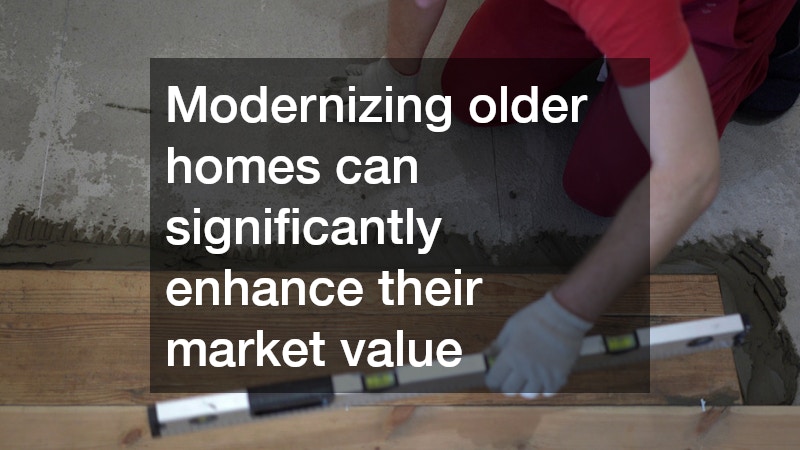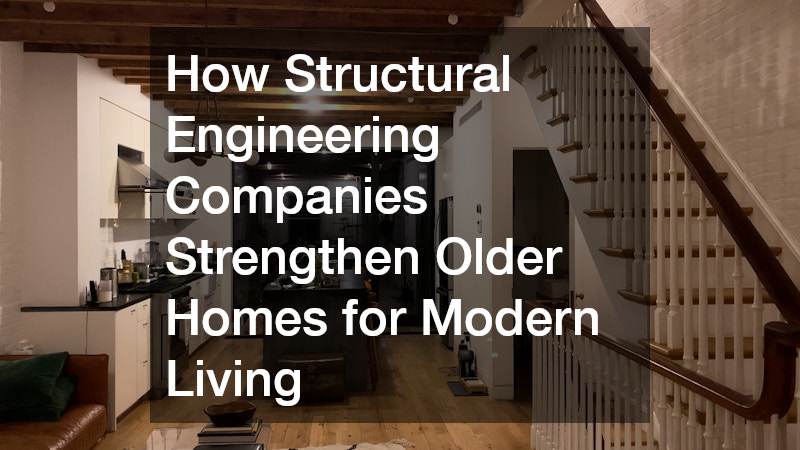The housing landscape is continually evolving, and older homes are often seen as relics of the past. However, structural engineering companies play a pivotal role in modernizing these homes, making them safe and suitable for contemporary lifestyles. Explore how these professionals strengthen older homes, making sure they meet today’s living standards while preserving their historical charm.
What Are the Common Structural Challenges Faced by Older Homes?
Older homes often have structural challenges that can make them unsafe and unlivable for modern occupants. Common issues include foundation deterioration, outdated electrical systems, and insufficient insulation. These problems not only compromise living conditions but can also impact the overall integrity of the home, necessitating professional intervention.
Foundation issues are particularly prevalent in homes built decades ago, as soil shifting and material degradation can lead to cracks and instability. Furthermore, homes constructed using outdated materials may lack the strength required to withstand modern environmental stresses, such as increased snow loads or seismic activity. Structural engineering companies conduct thorough examinations to identify these challenges early on, keeping future projects both safe and effective.
Insufficient insulation is another issue plaguing many older homes, resulting in energy inefficiencies and uncomfortable living environments. Many older homes lack the modern HVAC systems necessary to maintain stable indoor temperatures. Thus, structural engineers must address these shortcomings during the remodeling process, focusing on both comfort and energy efficiency.
How Do Structural Engineers Assess Older Homes for Modernization?
The assessment process begins with a comprehensive structural evaluation, where engineers inspect the home to understand its current condition. This evaluation typically includes examining load-bearing walls, roofing integrity, and the foundation for signs of wear and tear. By documenting these aspects, engineers can create a clear picture of the necessary repairs and modernization efforts needed.
A key part of this assessment is determining the original construction methods and materials used, as this influences the methodology for any improvements. Engineers carefully analyze blueprints, if available, and conduct in-depth structural analysis, identifying any weak points in the existing framework. This historical perspective allows for thoughtful decisions regarding which elements to preserve and which to renovate or replace.
Once the assessment is complete, engineers will usually compile a detailed report that outlines the home’s conditions and suggests a plan of action. This report serves as a roadmap for subsequent renovations and is vital for homeowners looking to blend the charm of their older residence with modern functionality. The guidance provided by structural engineers helps homeowners clearly understand the scope of work required to transition their home smoothly into the 21st century.
What Solutions Do Structural Engineering Companies Provide for Strengthening Older Homes?
Structural engineering companies offer a range of solutions specifically designed to strengthen older homes while minimizing disruption to their aesthetic appeal. One common method is reinforcing foundations using techniques like underpinning, which involves extending the foundation below its original level. This technique enhances stability and ensures that the home can withstand modern environmental stresses, significantly enhancing its longevity.
Another solution involves retrofitting existing structures with modern materials that provide greater durability and energy efficiency. For instance, engineers can replace outdated plumbing and electrical systems with current standards to minimize hazards and improve overall safety. They can also enhance insulation and introduce energy-efficient windows, further modernizing the home without sacrificing its historical charm.
Structural engineering companies often focus on preservation and can assist in protecting elements of historical value, making sure renovations remain respectful of the home’s original architecture. This compromise between modern needs and historical integrity is crucial for homeowners who wish to maintain the character of their residences while adapting them for contemporary living. By employing skilled craftsmen familiar with traditional techniques, engineers can achieve this balance and strengthen the home effectively.
How Does Modernization Impact the Value of Older Homes?
Modernizing older homes can significantly enhance their market value, transforming them from niche properties into desirable modern residences. Many buyers are particularly attracted to homes that blend contemporary amenities with historical features, making these properties more appealing in today’s competitive housing market. Structural improvements can lead to increased demand and higher selling prices, as homebuyers prioritize safety and energy efficiency.
Enhanced energy efficiency resulting from structural upgrades can lead to ongoing savings in energy bills, which is an attractive selling point for potential buyers. Homeowners may find that their investment in modernizing and strengthening their homes is returned through increased resale value. Consequently, many see structural engineering not just as a necessary fix, but as a strategic investment for financial gain in the future.
Additionally, modernized older homes can open up opportunities in the rental market, as they cater to families and individuals who appreciate historical charm but require the conveniences of modern living. This creates an ongoing demand for well-renovated homes in urban areas and suburbs alike, reflecting a growing trend toward revitalizing past architectural styles. As structural engineers continue their work enhancing these homes, both historical preservation and financial returns can go hand in hand.
Structural engineering companies are essential in transforming older homes for modern living. Their expertise not only strengthens these homes physically but also enhances their value and desirability in today’s housing market. As we continue to embrace sustainable living, the role of structural engineers in preserving our architectural heritage while adapting it for contemporary needs will only grow in importance.




